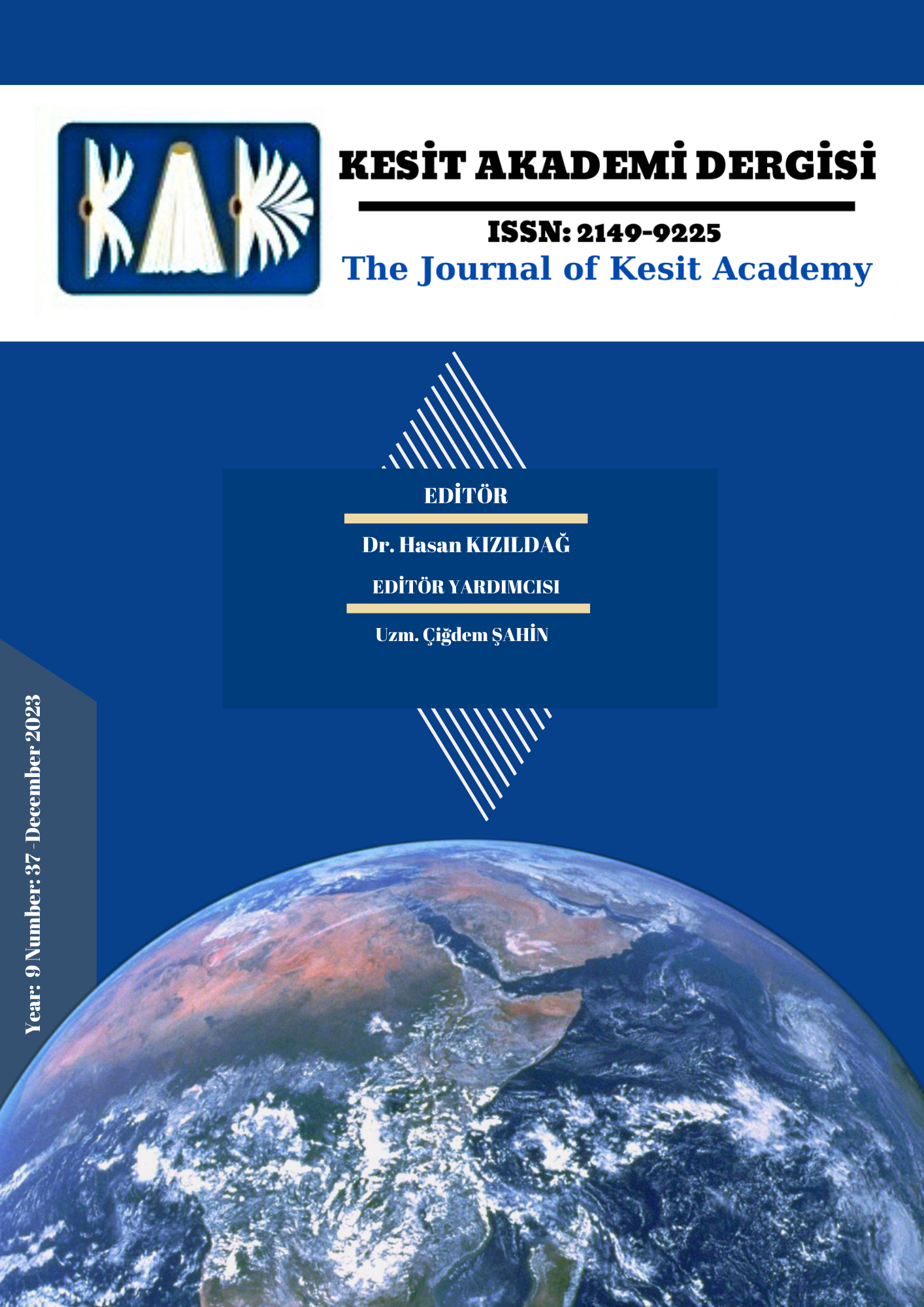Author :
Abstract
Felsefe öğretim programında felsefe öğretiminin temel amacı; “Temel değerleri benimsemiş bireyler yetiştirmek, yeni neslin değerlerini, alışkanlıklarını ve davranışlarını etkileyebilmek” (Millî Eğitim Bakanlığı, 2018: 6) olarak belirtilmiştir. Yapılan araştırmada “Ortaöğretim felsefe ders kitabında yer alan değerler nelerdir?” problemine yanıt aranmaktadır. Araştırmada verilerinin toplanması; kullanımda olan felsefe ders kitabı Talim ve Terbiye Kurulu Başkanlığının 28.05.2018 gün ve 78 sayılı kararı ile ders kitabı olarak kabul edilen editörlüğünü Asım Yapıcı’nın yaptığı ders kitabı incelenmiştir. Yapılan bu çalışmada söz konusu kitap; ‘Nezaket’, ‘Estetik’, ‘Arkadaşlık’, ‘Temizlik’, ‘Yardımlaşma’, ‘Sevgi’, ‘Sorumluluk’, ‘Özgürlük’, ‘Çalışkanlık’, ‘İş birliği’, ‘Aile’, ‘Alçak gönüllülük’, ‘Hoşgörü’, ‘Misafirperverlik’, ‘Saygı’, ‘Dayanışma’, ‘Adalet’, ‘Barış’, ‘Dürüstlük’, ‘Vatanseverlik’, ‘Dostluk’, ‘Manevi ve Kültürel Unsurlar’, ‘Doğa’, ‘Din Kültürü Unsurları’ ve ‘Mutluluk’ olmak üzere toplam 25 değer taranarak incelenmiştir. Bu değerler UNESCO tarafından belirlenen Yaşayan Değerler Listesi, Rokeach’ın Değer Sınıflandırması ve felsefe dersi öğretim programında yer alan değerler arasından seçilmiştir. Ortaöğretim felsefe ders kitabının içerisindeki yazılı ve görsel ifadelerde belirlenen 25 değer taranarak bu değerlere ders kitabında ne sıklıkta yer verildiği saptanmaya çalışılmıştır. Değerlendirme sonunda belirlenen 25 değer çerçevesinde taranan ders kitabında en sık kullanılan değerlerin; doğa, din kültürü unsurları, özgürlük ve sorumluluk değerleri olduğu tespit edilmiştir. İncelenen felsefe kitabında en az yer verilen değerin ise alçakgönüllülük, dayanışma, misafirperverlik, yardımlaşma değeri olduğu; iş birliği ve hoşgörü değerlerine ise yer verilmediği görülmüştür. Bu bağlamda yapılan çalışmaların oldukça sınırlı olması ve felsefe ders kitabında yer alan değerlerin incelenmesi bakımından literatüre katkı sağlayacağı düşünülmektedir. Araştırmanın ayrıca mevcut felsefe ders kitabında yer alan metin ve görsellerdeki değerleri tespit etmenin; değerlerin öğretimine ve kazandırılmasına yardımcı olacağı ve daha sonra hazırlanacak olan felsefe ders kitaplarındaki değerler için metinsel içeriklerin oluşturulmasına katkı sunacağı düşünülmektedir.
Keywords
Abstract
The basic aim of the philosophy teaching in philosophy curriculum is given as “Training individuals adopting basic values, being able to affect the values, habits and behaviours of the new generation” (Ministry of Education, 2018: 6). In the current study, it is sought to find the answer for the question “What are the values in the secondary education philosophy coursebook?”. In order to collect the data for the study, the book in use which was approved by the Board of Education with a day of 28.05.2018 and no of 78, of which editorship was made by Asım Yapıcı was investigated. The books was reviewed for the sake of 25 values in total as ‘Kindness’, ‘Aesthetic‘, ‘Friendship‘, ‘Cleanliness‘, ‘Helping Each Other‘, ‘Compassion‘, ‘Responsibility‘, ‘Freedom‘, ‘Industriousness‘, ‘Cooperation‘, ‘Family‘, ‘Humility‘, ‘Tolerance‘, ‘Hospitality‘, ‘Respect‘, ‘Solidarity‘, ‘Justice‘, ‘Peace‘, ‘Honesty‘, ‘Patriotism‘, ‘Neighbourliness‘, ‘Spiritual And Cultural Component‘, ‘Nature‘, ‘Religious Culture Components’ and ‘Happiness‘. These values were chosen among the values given in the List of Living Values determined by UNESCO, Rokeach Values Classification, and philosophy curriculum. Twenty-five values determined in the secondary education philosophy coursebook with both written and visual expressions were scanned and it was tried to determine how often these values given in the coursebook. It was found in the coursebook that was scanned within the framework of 25 values determined at the end of the evaluation that the mostly used values were nature, religious culture components, freedom, and responsibility. The mostly mentioned values in the coursebook were found to be humility, solidarity, hospitality and helping each other. It was also determined that cooperation and tolerance values were not given at all. In this sense, it is thought that the current study will contribute to the literature since there are limited number of studies investigations of the values given the philosophy coursebook. In addition, it is believed that determining the values in the texts and visuals given in the current philosophy coursebook will contribute to teaching and attainment of the values and to forming the textual contents that will be prepared for philosophy coursebooks.
